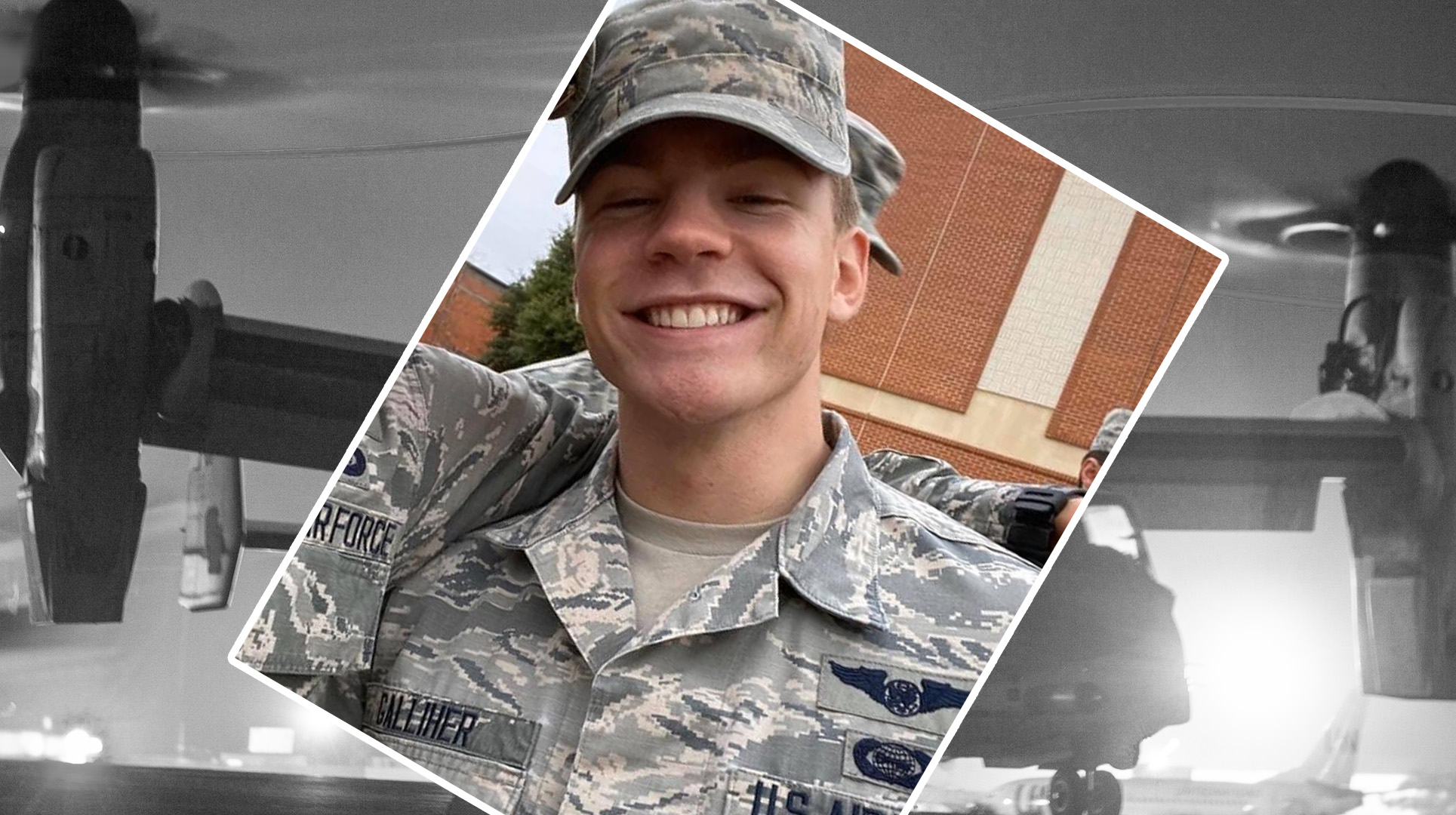

An Air Force linguist from Massachusetts was confirmed to have died in the crash of a CV-22 Osprey off the coast of Japan on Wednesday, November 29.
Air Force Staff Sgt. Jacob “Jake” Galliher was trained in Mandarin Chinese and was likely one of the service’s elite language experts known as Airborne Cryptologic Language Analysts. The 24-year-old and his wife, according to family, had also just welcomed their second child seven weeks before the crash.
Seven other Air Force personnel are still missing from the crash. The Air Force has classified the search for the remaining seven as a rescue operation.
U.S. Rep. Richard Neal, who represents Galliher’s hometown in Congress, confirmed Galliher’s death in a press release. The Air Force said Thursday that the remains of one Airman on board the Osprey had been recovered, but had not named Galliher by Friday afternoon.
Galliher was a star high school football player in Pittsfield, Massachusetts before joining the Air Force, according to a statement released by Taconic High School, from which Galliher graduated in 2017. According to his family, Galliher joined the Air Force soon after high school and trained for two years as a linguist. A picture Galliher posted to his own Facebook page shows him wearing his uniform with enlisted aircrew wings and the Air Force’s intelligence occupational badge, likely indicating he was trained as an Airborne Cryptologic Language Analyst, a highly selective and secretive job informally referred to as a “flying linguist” in the Air Force.
Flying linguists are specially trained language experts who fly on specially outfitted spy planes to listen in on radio and other signals communications from other countries.
A star football player at Taconic High School in Pittsfield, Galliher enlisted in the Air Force after graduating in 2017. Tor Krautter, who identified himself as Galliher’s step-father on social media, posted a message from Galliher’s family on Friday, hours after he said they had learned of his death.
In the wake of the recent tragic incident involving U.S. Air Force Staff Sergeant Jacob M. Galliher, his family wishes to express our heartfelt gratitude for the outpouring of support and condolences received from friends, community members and the nation at large.
Jake leaves behind a devastated family, including his beloved wife Ivy, two young sons aged 2 years and 7 weeks old, a loving family and countless friends, all of whom are grappling with this profound loss.
Jake was an amazing father, son and brother dedicated to his family and friends and we look forward to telling his story when the time is right.
During this period of immense grief, we kindly ask for privacy and understanding as we navigate this unimaginable loss. Our thoughts and support are with the families of Jake’s fellow crew members who are dealing with this tragedy as well.
Troubled history of Ospreys
The CV-22 Osprey, which is built by Bell Boeing and also flown by the Marines and Navy as the MC-22, has experienced several high-profile mishaps in recent years. The Marines found that a 2022 crash that killed a crew of four was caused by an engine issue known as a hard clutch engagement, or HCE, a weakness that was known to have caused other crashes and near-crashes in the Osprey community in the years before.
After the 2022 crash, the Marine Corps told the families of the crew that engineers had tried to design a fix for the HCE in 2017 but that effort had failed.
“An effort to redesign the IQA was initiated in 2017, with the goal of improving the design for reliability and performance,” the Marine Corps wrote in a document obtained by Task & Purpose. The input quill assembly (IQA) connects the engine to the drive system. “That redesign, however, did not incorporate a known solution to the HCE phenomenon because the exact cause of HCEs is still unknown. Moreover, that effort ultimately failed qualification in 2020.”
Another Osprey crash in August killed three Marines and injured 20. The cause of that crash has not been released.
Witnesses to the crash in Japan that killed Galliher told Reuters that the “left engine appeared to be on fire as it approached an airport for an emergency landing in clear weather and light winds.”
The cause of the Japan crash will likely not be known for months, but in an interview with the Berkshire Eagle in the wake of Galliher’s death, Krautter made it clear he wanted answers.
“The message that we want to get out to anyone that’s willing to listen, is, ‘How many more of our service members need to die on those damn planes?’” Krautter told the newspaper. “They put our boy on a broken plane.”
The latest on Task & Purpose
- End of an era: The last class of Marine Scout Snipers graduates on Dec. 15
- That one scene: The most unrealistic part of ‘Rambo: First Blood’
- AC-130 destroys truck after watching it launch ballistic missile at US troops in Iraq
- Army veteran launches ‘Hots & Cots,’ a Yelp for enlisted life
- Trench warfare tips: What US troops need to know from Ukraine